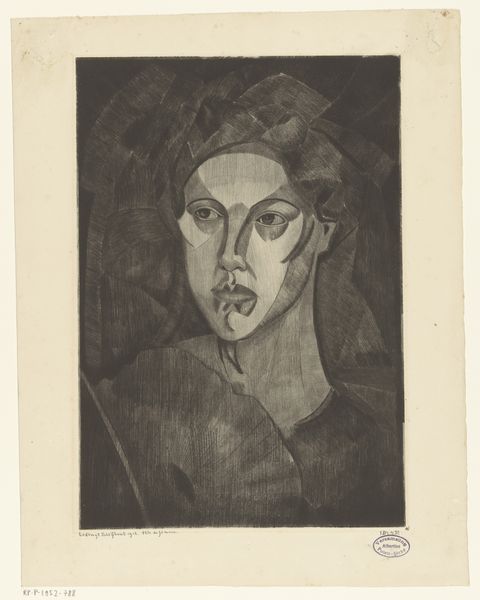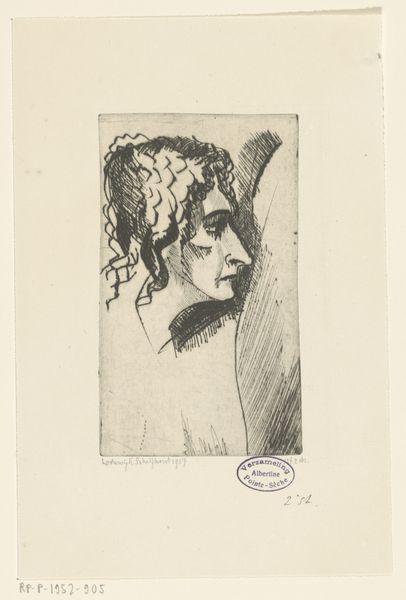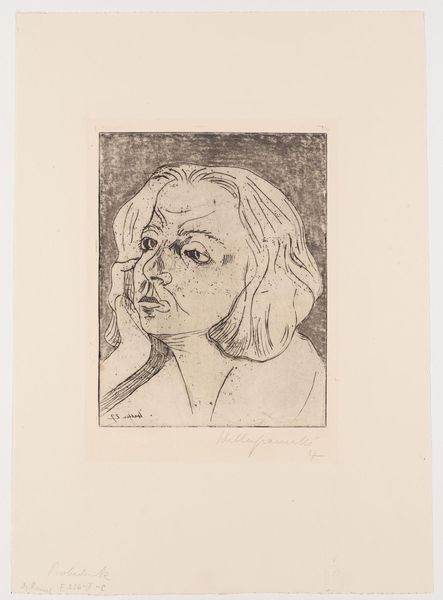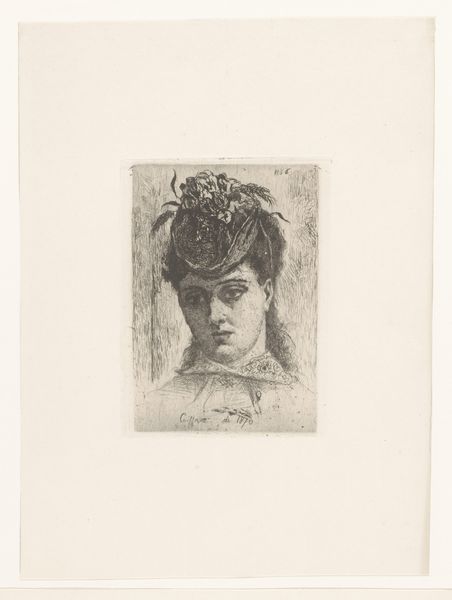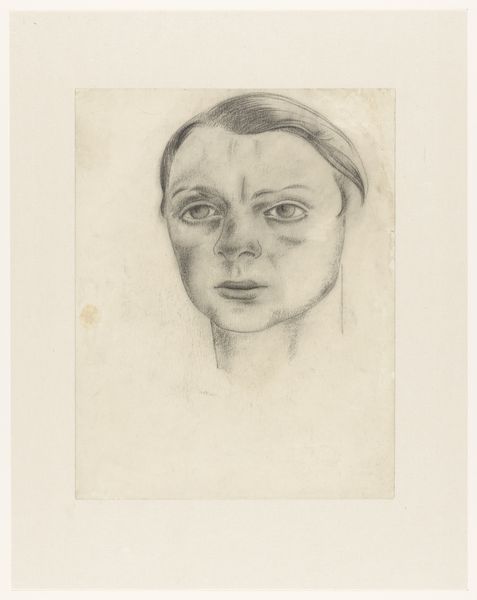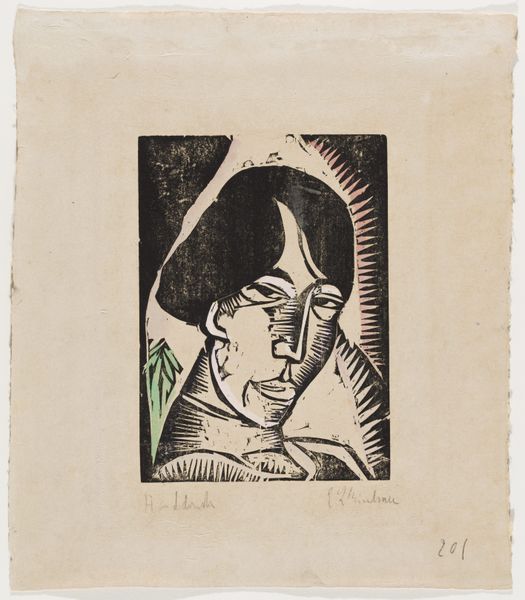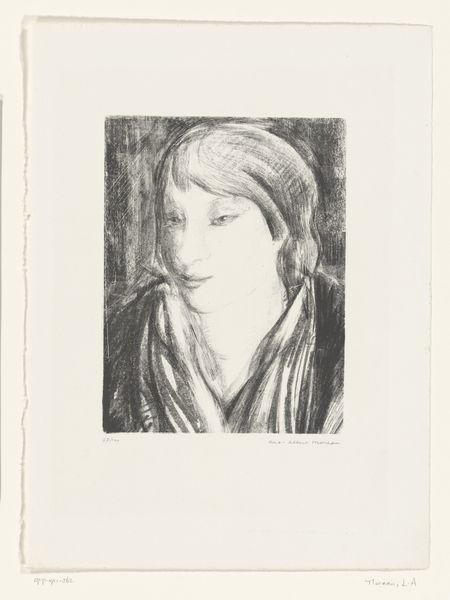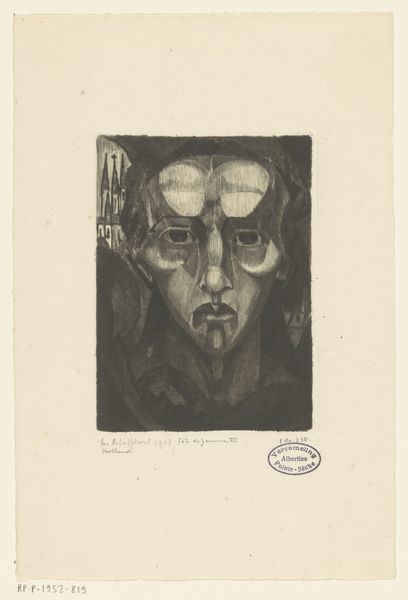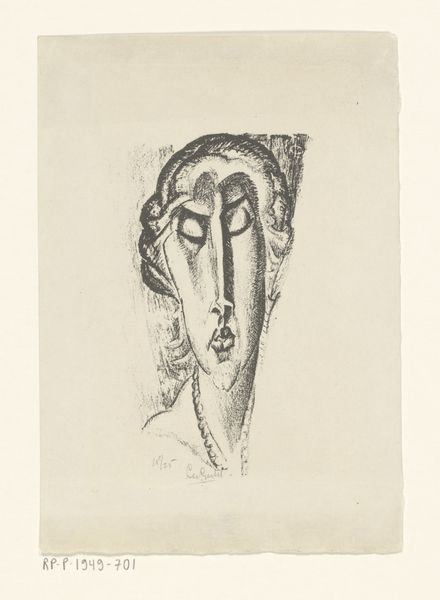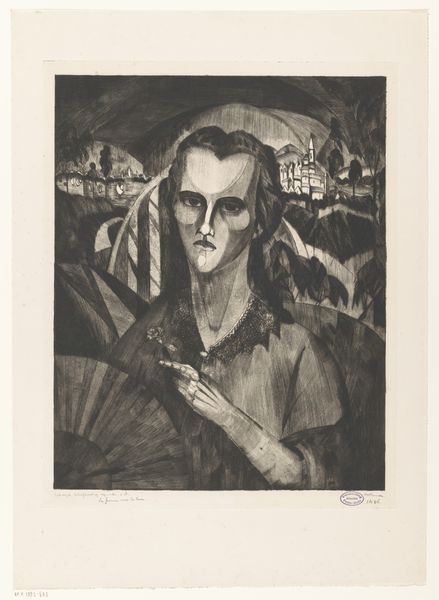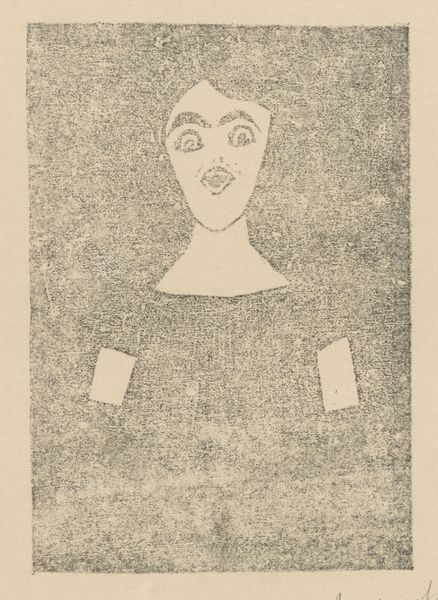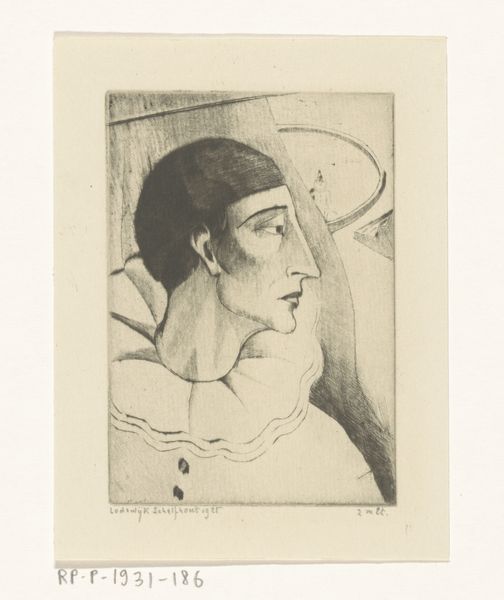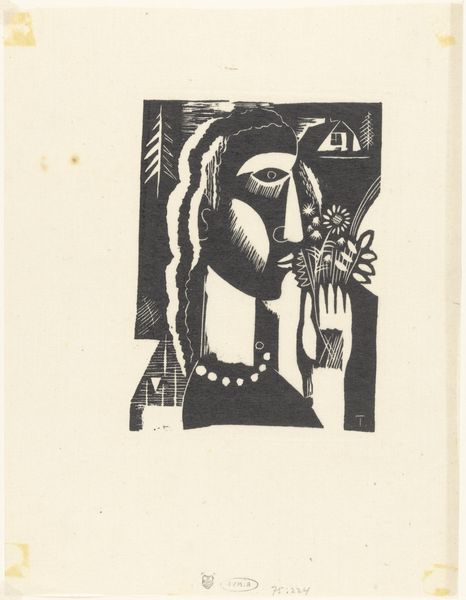
drawing, paper, graphite
#
portrait
#
pencil drawn
#
drawing
#
cubism
#
pencil sketch
#
caricature
#
figuration
#
paper
#
geometric
#
line
#
graphite
#
portrait drawing
Dimensions: height 333 mm, width 232 mm
Copyright: Rijks Museum: Open Domain
Curator: Let’s discuss Lodewijk Schelfhout’s 1912 pencil drawing, "Hoofd van een vrouw," which translates to "Head of a Woman." It resides here at the Rijksmuseum. Editor: It has this very subdued, almost somber mood to it. The monochromatic palette, combined with the fragmented planes, it’s quite striking. There is a geometric abstraction. Curator: Absolutely. Schelfhout was clearly engaging with Cubism, which was transforming artistic representation. Notice how he fractures the woman’s face and the surrounding space into geometric forms. It disrupts the traditional portrait and reflects the fragmented experience of modernity at that time. Editor: The stark lines create shadows, almost like she's in a theatrical lighting, which highlights specific features like the brow, nose and mouth while others remain almost in full shadow. Is she meant to be a type of character? Curator: It is likely, although difficult to identify conclusively. However, given the period and artistic trends of this time, one could argue the "character" is actually a deliberate challenge to societal portraiture norms. Artists began using portraiture as a vehicle for more radical, expressive aims, and challenging bourgeois ideals. Editor: The rendering reminds of both of early caricature or fashion sketch because of the high contrast lines. And there is something severe in her eyes, or rather in their depiction through bold marks that follow, then diverge from, their natural lines. Curator: Yes, and that almost exaggerated feature emphasizes the artist’s hand, reminding us it's a constructed image, not a straightforward likeness. Perhaps that challenges traditional notions of feminine beauty as idealized within portraiture? It raises interesting questions about female representation during this era of significant social upheaval. Editor: Thinking about it now, her slightly defiant look, amplified through these sharp geometric shards, does place the aesthetic intent far above any pursuit of likeness. Curator: Indeed. It is an artistic statement on female identity in a world in flux. Editor: This cubist exploration through mere pencil strokes, is more affecting than I'd first imagined. Curator: It captures a historical and stylistic moment. A small yet vital piece in the mosaic of early modernism.
Comments
No comments
Be the first to comment and join the conversation on the ultimate creative platform.
